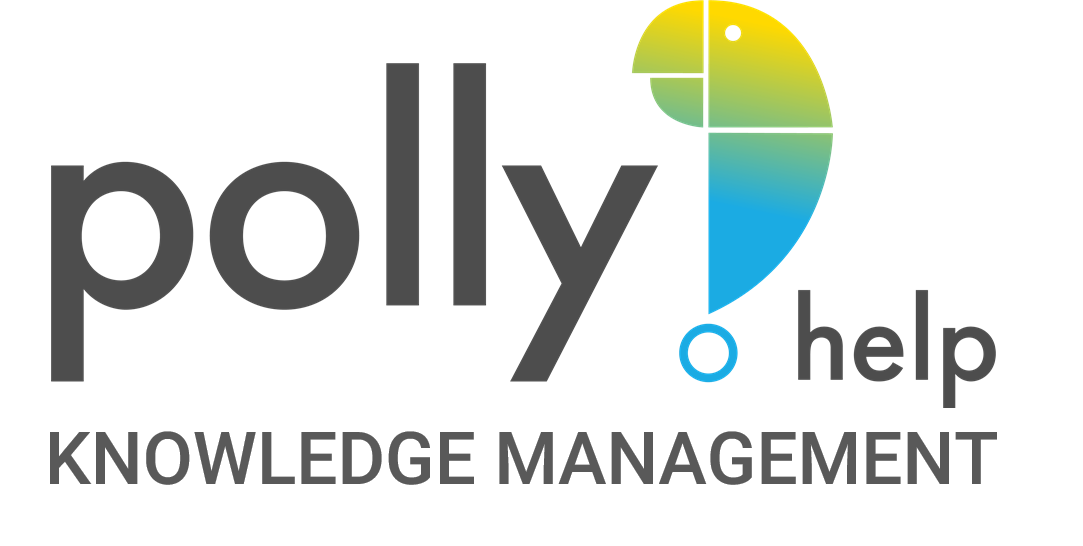In the fast-paced world of knowledge-intensive sectors, crafting an impactful knowledge management strategy is pivotal. This journey begins with a well-considered knowledge management implementation roadmap. It’s aimed at navigating the deep, often undiscovered pools of organizational intelligence. Establishing a robust knowledge management system is essential. It not only safeguards crucial information but also propels businesses towards groundbreaking innovations and increased market competitiveness.
Key Takeaways
- A strategic knowledge management implementation roadmap is vital for information accessibility and business process enhancement.
- Developing a knowledge management strategy requires a deep dive into current knowledge assets and usage patterns to identify and bridge gaps.
- An inclusive knowledge management system must be crafted to encourage a company-wide knowledge sharing culture.
- The initial assessment stage sets the foundation for implementing practical and effective knowledge management tools and strategies.
- Engagement of various stakeholders throughout the process commits an organization to continuous growth and adaptability.
The Imperative of Knowledge Management in Modern Business
Today’s tech evolution has elevated the importance of knowledge, placing it at the heart of modern business strategies. Recognizing the fundamental role of knowledge management is critical, as it drives innovation and competitive edge in the digital marketplace. Establishing effective knowledge management practices is now essential, calling for a sophisticated approach to manage an organization’s intellectual terrain.
Understanding the Role of Knowledge in the Digital Economy
In today’s digital economy, knowledge isn’t just a simple asset; it’s the driving force behind business growth and uniqueness. The digital age has lowered traditional market entry barriers, emphasizing the need for strong knowledge management. By transforming information into insightful actions, businesses can initiate innovative solutions, improve methods, and even lead industry revolutions.
Cultivating a Knowledge Sharing Culture
Cultivating a knowledge-sharing culture requires more than just new policies; it demands a transformation in organizational mindset. Companies championing free knowledge exchange reap the benefits of their team’s collective intelligence. Adopting superior knowledge management practices fosters teamwork and communication, laying the groundwork for breakthroughs. It bridges know-how gaps, allowing teams to utilize varied skills for solving challenges and advancing projects.
Core Elements of a Knowledge Sharing Culture:
- Encouraging open communication and collaboration among employees
- Recognizing and rewarding knowledge sharing behaviors
- Implementing user-friendly knowledge management tools and platforms
- Providing ongoing training and support for knowledge management initiatives
To succeed in the modern digital landscape, integrating advanced knowledge management practices and a flexible model is indispensable. It stands as a strategic must-have, fostering organizational agility, sparking innovation, and shaping a savvy, adaptable workforce.
Foundational Assessment of Organizational Knowledge
A robust knowledge management framework starts with assessing organizational knowledge. Initially, it involves examining what information exists, its usage, and deficiencies. This assessment reveals knowledge distribution and effectiveness. It also identifies areas needing improvement and opportunities for growth.
Identifying Knowledge Assets and Gaps
Effectively leveraging knowledge management tools starts with recognizing what knowledge assets are available. Conducting an in-depth inventory of these assets establishes the operational baseline. Identifying gaps in this architecture is crucial. It highlights potential performance or innovation barriers. This analysis is essential for developing strategies to address these issues.
Engaging Stakeholders for Comprehensive Needs Analysis
Success in knowledge management involves engaging stakeholders throughout the organization. Through workshops and discussions, a detailed needs analysis emerges. This process brings out diverse views on knowledge requirements. It ensures all suggestions are considered, setting the stage for knowledge-driven advancement.
| Knowledge Asset Type | Usage Frequency | Accessibility Rating | Gap Analysis Insights |
|---|---|---|---|
| Internal Documentation | Daily | High | Some files outdated, needs review |
| Customer Data | Weekly | Medium | Lacks comprehensive analysis tool integration |
| Market Research | Monthly | Low | Incomplete archive of historical trends |
| Competitive Intelligence | Quarterly | Medium | Needs systematized update mechanism |
Knowledge management tools like databases and collaborative platforms are transformational. They serve as both repositories and interfaces for information. Furthermore, they are analytical tools that enable data-driven improvements to the knowledge framework.
Aligning Knowledge Management with Business Strategy
At the heart of a progressive organization, integrating its knowledge management strategy with its business goals is crucial. This integration is the foundation of operational excellence. It guides a company towards an era where making informed decisions and innovating are common. An effective knowledge management plan should reflect the company’s ambitions. It should showcase the commitment to utilize knowledge for a competitive edge.
Key players within the organization are instrumental in fostering this synergy. They must ensure the company’s knowledge management system bolsters critical business functions. It’s about improving products and services, enhancing efficiency, and promoting a learning-centric company culture. Below are the key advantages of aligning knowledge management:
- Enhanced internal communication leads to quicker, transparent information flow.
- Employee engagement increases through purposeful knowledge sharing.
- With timely and precise information, customer satisfaction soars.
Developing such an intricate strategy requires deep insights from the leadership and various departments. Cross-functional input guarantees that the knowledge management strategy is integrated with different business aspects. This creates a strong, adaptable infrastructure.
The table below outlines main planning phase objectives and their alignment with wider business goals:
| Knowledge Management Objectives | Alignment with Business Strategy | Performance Indicators |
|---|---|---|
| Centralization of Knowledge Assets | Streamlining Operations | Reduction in Redundancy and Search Time |
| Employee Training and Development | Promoting Innovation & Skill Growth | Boost in Employee Retention and Expertise |
| Customer-Centric Knowledge Base | Improving Customer Experiences | Higher Customer Satisfaction Ratings |
Linking a knowledge management plan with business strategy is vital. It bridges the operational and strategic vision gap. This provides a roadmap for businesses to become knowledge-driven. It solidifies their market position through enhanced performance and innovation.
Developing a Tailored Knowledge Management Framework
In fostering an environment where information thrives, creating a customized knowledge management framework is crucial. Every organization has unique traits that shape its knowledge management systems. This tailored approach not only meets specific organizational needs but also integrates knowledge management practices seamlessly into the business landscape.
Establishing Governance for Knowledge Management
For a lasting knowledge management strategy, it’s vital to build a strong governance structure. This involves setting clear policies, defining roles, and outlining responsibilities that align with the organization’s strategic goals. Governance ensures the knowledge management framework stays in line with industry standards and the company’s vision. It acts as both a guiding force and a way to hold processes accountable to enterprise objectives.
Incorporating Best Practices into Knowledge Processes
Embedding knowledge management best practices into organizational processes is key to success. These practices include fostering a culture of continuous learning and encouraging open knowledge sharing. By integrating these methods into everyday operations, companies can make their knowledge strategy a lived reality. This creates a powerful link between best practices and daily tasks, making knowledge a deliberate tool for enhancing organizational effectiveness.
In sum, creating a tailored knowledge management framework requires careful planning and a strategic mindset. Establishing governance provides a stable base, and incorporating best practices turns strategy into tangible benefits for the company.
Knowledge Management Implementation Roadmap
The journey to a successful knowledge management plan starts by creating a detailed knowledge management implementation roadmap. This plan highlights the key phases needed to deploy and refine an effective knowledge management model. It covers everything from the early evaluation of systems to the final steps of launch and ongoing review. Each point is carefully chosen to align with the company’s aims and enhance existing investments.
At the heart of the roadmap is aligning knowledge efforts with the business’s overall strategy. This connection ensures the creation of a knowledge system that boosts the organization’s objectives. To achieve this, a staged approach is adopted:
- Initial Assessment: Identifying knowledge assets and auditing current infrastructures.
- Strategy Development: Crafting a tailored knowledge management plan.
- Technology Selection: Incorporating tools and platforms that align with the chosen knowledge management model.
- Design & Development: Constructing the knowledge management architecture.
- Deployment: Implementing the system within the organization.
- Performance Review: Evaluating success and measuring ROI continuously.
A knowledge management plan is dynamic, changing as business needs evolve. It requires regular reviews and updates to stay relevant in changing environments. This ensures the organization remains agile in handling and sharing knowledge.
The steps to efficient knowledge management are presented below. This table summarizes the essential elements of the knowledge management implementation roadmap:
| Phase | Objectives | Actions | Outcomes |
|---|---|---|---|
| 1. Assessment | Evaluation of existing knowledge assets | Knowledge audits, stakeholder interviews | Identified knowledge gaps and strengths |
| 2. Strategy | Alignment with business objectives | Strategy sessions, documentation of goals | A refined, actionable knowledge management plan |
| 3. Technology | Selection of supporting tools | Market analysis, tool selection criteria | Chosen platforms that support the knowledge management model |
| 4. Development | Building the knowledge architecture | Design workshops, prototyping | A robust knowledge management infrastructure |
| 5. Deployment | Rolling out the system across the organization | Implementation plans, training | System adoption and initial user feedback |
| 6. Review | Ongoing evaluation of knowledge management practices | ROI analysis, feedback collection | Continuous improvements and measurable success indicators |
This roadmap illustrates the transition from planning to action, ensuring each step solidifies the foundation for ongoing knowledge management success.
Choosing the Right Knowledge Management Tools
The selection of knowledge management tools is vital for success. It’s not just about technology. It involves aligning with the strategic goals of a company. These tools are crucial for sharing and using knowledge efficiently throughout the organization. They help create a culture where informed decisions and continuous learning are valued.
Matching Tools with Organizational Objectives
It’s crucial to match knowledge management tools with the company’s goals. A detailed assessment of the software market is necessary. Look for tools that simplify collaboration, automate knowledge capture, and fit into existing workflows. This ensures the chosen tools support the company’s strategic direction, enhancing the knowledge management system’s value.
Assessing Technology for Seamless Integration
Selecting knowledge management tools requires careful consideration of their integration with current systems. To minimize disruptions and encourage user adoption, tools need to integrate well. Consider the ease of implementation, user-friendliness, and the quality of customer support. These factors are crucial for a successful knowledge management system.
| Feature | Benefit | Impact on Knowledge Management |
|---|---|---|
| Collaboration Enhancement | Facilitates teamwork and idea sharing | Promotes a dynamic knowledge sharing culture |
| Advanced Search Capabilities | Enables quick and accurate information retrieval | Improves productivity and decision-making |
| Data Security Measures | Protects sensitive information | Builds trust in the system and ensures compliance |
| Comprehensive Analytics | Tracks usage and effects of knowledge initiatives | Guides strategy and demonstrates ROI |
| User-friendly Interface | Reduces learning curve and increases adoption | Enhances employee engagement with the system |
| Customization Options | Allows adaptation to specific organizational needs | Makes the tool more relevant and effective |
By following best practices in the selection of knowledge management tools, businesses can achieve effective integration. This careful selection process lays the groundwork for a flexible and resilient system. Such a system supports an organization’s journey towards achieving its strategic goals.
Designing the Knowledge Management Architecture
In the current competitive arena, crafting a potent knowledge management architecture is paramount for firms aiming to tap into their collective intellect. It’s more than a mere info depot; it’s about understanding the flow of know-how within a company—from genesis to execution—and optimizing it for innovation and operational excellence. A well-crafted architecture intricately meshes the specifics of a knowledge management plan with an organization’s broader knowledge management strategy vision.
Defining the Knowledge Life Cycle
An essential aspect of any knowledge management framework is pinpointing the knowledge life cycle. This cycle details the journey of knowledge through stages like acquisition, validation, storage, sharing, and usage. Recognizing these stages lets our architecture ensure that knowledge is not just stored but is also continuously enhanced, updated, and readily available to those who need it in the organization.
Creating a User-Centric Knowledge Ecosystem
When architecting a knowledge management system, centering on user experience is crucial. A user-centric knowledge ecosystem highlights simplicity, robust search functions, and collaborative tools that boost active engagement from the team. Through these elements, the system shows its worth, captivating team members and syncing with the organization’s wider knowledge management strategy. This cultivates a workspace where knowledge is easily reached and central to daily tasks, fostering a culture of ongoing learning and growth.
Embedding these components into a detailed knowledge management plan enables an organization to adeptly manage and employ its knowledge resources. With a firm knowledge management framework in place, companies lay the groundwork for enduring success and growth, transforming innovation from a sporadic event into a regular result of everyday functions.
Knowledge Capture and Curation Techniques
For any organization aiming for long-term success, integrating effective knowledge capture and curation techniques is crucial. Robust knowledge management tools ensure the preservation and optimal use of intellectual assets. These tools aid in driving innovation and making informed decisions.
A successful knowledge management plan revolves around accurately collecting, documenting, and curating knowledge. It’s essential to develop workflows that streamline this process for employees. This encouragement allows them to share insights, knowing their contributions are both valued and preserved.
- Systematic Documentation of Procedures
- Utilization of Knowledge Repositories
- Deployment of Intelligent Capture Systems
- Continuous Curation and Content Verification
The aim in knowledge capture is to access both explicit and tacit knowledge sources. This encompasses documented information as well as the invaluable, experience-based knowledge in employees’ minds. Knowledge management tools are designed to gather and centralize this varied knowledge on accessible platforms.
Curation ensures that the pooled knowledge is actively managed. It involves routine reviews within the knowledge management plan. These reviews eliminate outdated information and highlight new, relevant data. The goal is to maintain a flexible and current knowledge base.
Effective curation also involves systematic categorization. It’s about organizing knowledge to facilitate easy access and simple cross-referencing for users. This might involve tagging systems, indexing, and other methods to enhance knowledge accessibility.
- Establishing a Governance Policy for Knowledge Assets
- Defining Clear Roles in Knowledge Management
- Creating an Update and Verification Schedule
The combination of targeted capture techniques and rigorous curation within a knowledge management plan creates a vibrant knowledge ecosystem. This ecosystem enhances internal operations and strengthens the company’s market position by utilizing collective intelligence.
Executing the Knowledge Management Strategy
An effective knowledge management implementation roadmap is crucial for executing a company’s strategic vision. Implementing the knowledge management system in phased stages ensures a smoother transition. It also reduces the potential for operational disruptions. Change management is essential in this process. It helps evolve the organization into a knowledge-centric environment.
Phased Rollout and Change Management
The phased approach allows for a systematic integration of the knowledge management system. Each stage receives the necessary attention and resources. This strategy simplifies the deployment complexity. It also helps the workforce adjust to new systems and processes. Effective change management involves clear communication and training. Support structures are needed to help navigate the transition.
Gathering Feedback and Managing Adjustments
Gathering feedback from end-users is pivotal in executing the knowledge management strategy. This feedback is invaluable. It provides insights into the system’s effectiveness and areas needing refinement. Adjustments are part of a continuous improvement cycle. It ensures the knowledge management model stays relevant and adapts to business dynamics. Feedback incorporation is an ongoing practice. It maintains the knowledge management system’s effectiveness.
Below is an illustration of the feedback loop in knowledge management systems:
| Stage | Description | Impact |
|---|---|---|
| Collection | Gathering input from system users and stakeholders | Reveals effectiveness and satisfaction levels |
| Analysis | Interpreting the data for actionable insights | Identifies trends and pinpoint areas to improve |
| Implementation | Making adjustments to the knowledge management system based on feedback | Enhances functionality and user experience |
| Review | Assessing the impact of changes | Solidifies the value of feedback in the improvement process |
The feedback loop ensures the knowledge management system remains dynamic. It continuously adapts and improves. This highlights the essence of dynamic knowledge management. It places users and their insights at the center of its evolution.
Monitoring and Measuring Knowledge Management Success
To truly grasp the impact of a knowledge management strategy, organizations need to diligently monitor and measure its effectiveness. It’s more than just ticking off goals. It involves a commitment to ongoing improvement and ensuring growth within the framework. Central to this process is adopting best practices in knowledge management. These practices help capture accurate data, acting as a guide for future improvements. They ensure the system aligns with the organization’s objectives.
Setting up key performance indicators (KPIs) and metrics for return on investment (ROI) is crucial. These metrics serve as the foundation for effective monitoring. They allow businesses to quantitatively evaluate their knowledge management initiatives. Insights from these metrics indicate if adjustments are necessary, if goals are met, and demonstrate the value of knowledge management to stakeholders.
Setting Up KPIs and ROI Metrics
Establishing KPIs and ROI metrics is critical for tracking progress. These metrics help businesses assess the performance and effectiveness of their knowledge management strategies. By analyzing this data, companies can identify areas for adjustment, confirm achievement of objectives, and showcase knowledge management’s worth to key stakeholders.
Continuous Improvement in Knowledge Management Practices
Embedding a continuous improvement culture in knowledge management practices keeps strategies aligned with changing business needs. Evaluation of current processes against KPIs and ROI metrics allows for iterative improvements. This enables data-driven decisions that boost efficiency and foster knowledge sharing across the organization.
A strong assessment system values both outcomes and the progression towards achieving them. It opens doors for organizations to innovate and elevate their knowledge management practices. This fosters a culture where knowledge is viewed as a vital asset to business success.
| Key Performance Indicator (KPI) | Description | Target |
|---|---|---|
| User Engagement with KM System | Track how actively users interact with the knowledge management system | Increase by 20% in 12 months |
| Knowledge Utilization Rate | Measure the frequency at which knowledge assets are accessed and used for decision-making | 95% utilization of key knowledge assets |
| Accuracy of Knowledge Content | Gauge the reliability and correctness of information in the knowledge base | Maintain 98% accuracy rate |
| Time to Proficiency | Measure the time required for employees to become proficient in key job activities using the knowledge system | Reduce time by 15% within 6 months |
Integrating KPIs and iterating on the knowledge management strategy enables firms to excel in knowledge-intensive fields. As companies advance towards an informed future, refining their knowledge management approach can give them a significant competitive advantage. It fosters a learning-oriented culture that’s essential for organizational success.
Conclusion
The creation of a knowledge management system signifies a critical phase for organizations focused on knowledge. Following a knowledge management implementation roadmap is crucial. It guides firms through the complexities of handling vast data and constant information flow. This roadmap is more than a starting point; it evolves alongside your organization and the dynamic nature of the business world.
Long-term success hinges on integrating knowledge management tools designed for your company’s specific needs. By carefully selecting these tools and committing to engage stakeholders, companies can fully realize their potential. This journey extends beyond initial implementation. It encompasses ongoing improvement, assessment, and adjustment in alignment with your team’s changing goals and needs.
Adopting the view that a strong knowledge management foundation is key to fostering an innovative and cooperative environment is essential. The true measure of achievement is embedding these practices into your organization’s fabric. Here, their value becomes clear and lasting, ensuring your place in a competitive landscape where knowledge reigns supreme.





